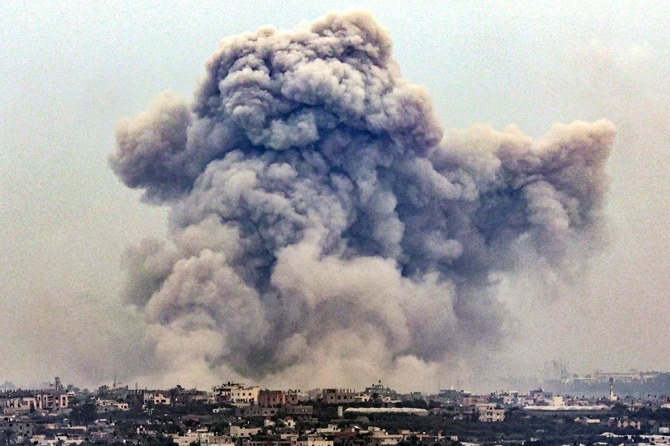
Since Russia invaded Ukraine, one of the genuine geopolitical surprises to many has been the stronger than expected unity the West has shown against Moscow. Seven economics sanctions packages have been announced by the EU alone.
Yet, as Wednesday marked the six-month anniversary of the start of the conflict, greater cracks are beginning to show.
Hungary, of course, has been the most outspoken outlier so far. Yet behind the wider European public statements of support for Ukraine there are significant differences of opinion. These include disagreements between key Western European states, such as Germany and France, and nations in the east of the continent, such as the Nordic and Baltic countries and Poland, who want an even tougher response.
The schisms within Europe were highlighted in June by a European Council on Foreign Relations poll. It revealed that while Europeans feel significant solidarity with Ukraine and support sanctions against Russia, opinions are split about longer-term goals. They are primarily divided between a “peace” camp (35 percent and potentially growing) that simply wants the war to end as quickly as possible, and a “justice” camp that believes the more pressing goal is to punish Russia (22 percent). In all countries except Poland, the peace camp is the larger of the two.
In addition, European citizens increasingly worry about the cost of sanctions and the threat of military escalation.
So far, these European differences of opinion have been camouflaged, quite successfully, by the Brussels-based club. However, this might become much harder to achieve as the economic and political pain resulting from the conflict bites harder.
Changes of leadership could also make a difference. Italy, which under Prime Minister Mario Draghi has been a strong supporter of Kyiv, could become significantly less so if the nation’s right-wing bloc, within which there is significant sympathy for Russia, wins power in next month’s general election.
It is unlikely that a decisive victory by either side is imminent, as long as Moscow is prepared to devote huge amounts of resources to the conflict and Ukraine continues to receive extensive military supplies from the West.
Andrew Hammond
Against this backdrop of European unity that will probably become harder to maintain as time goes on, there is significant uncertainty about how much longer the war will continue. However, there are some clues as to likely next steps.
It is unlikely that a decisive victory by either side is imminent, as long as Moscow is prepared to devote huge amounts of resources to the conflict and Ukraine continues to receive extensive military supplies from the West.
The most likely scenario in coming weeks, therefore, is a war of attrition that might result in the conflict stretching into 2023, albeit potentially with a lower tempo of fighting.
The level and range of risks in Ukraine remains exceptionally high. This is partly because Moscow’s exit strategy is not clear and miscalculation is still a significant possibility. While the Russian military was ineffective to begin with, it now controls 20-25 percent of the country and might hold much of this territory for years.
Moreover, it is now the declared strategy of the Western alliance, led by the US, to try to inflict a defeat on Russia. In the post-war history of NATO this represents a very important difference from past events and raises the stakes in the months ahead.
Historically, wars tend to end in one of two ways: One side imposes its will on the other on the battlefield and then at the negotiating table; or both sides embrace a compromise they consider preferable to continued fighting.
Unless there is a big change, neither of these outcomes seems imminent in Ukraine, especially while both sides are prepared to continue to devote massive resources to the conflict.
Following the Russian territorial gains in recent months, Ukraine is gathering a large fighting force equipped with Western weapons to try to recapture some of its southern and eastern territory. Moscow now controls territories in the nation with the combined size of Belgium, Luxembourg and the Netherlands.
Ukraine’s President Volodymyr Zelensky has ordered his military forces in particular to try to recover areas considered key to the country’s economy. Meanwhile, Russia is preparing for the next stage of its offensive, with its forces stepping up military activity in “all operational areas.”
The wider economic impact of the war could be further exacerbated by Russia cutting off more gas supplies, at least periodically, to a growing number of EU nations in coming months. With this in mind, European energy ministers have agreed a controversial plan to try to deliver voluntary cuts in gas use of 15 percent from next month until March next year.
As pessimistic as this war of attrition scenario might seem — not least the human cost, including millions of refugees — it is far from the worst-case outcome. That would be most likely to be come about if the conflict escalates beyond Ukraine’s borders to involve NATO countries. While this possibility still seems unlikely to many observers, the threat cannot be totally dismissed, such is the volatility of the situation.
Such a worst-case escalation would be a genuine catastrophe for many people and the potential use of nuclear or chemical weapons could not be completely ruled out.
Moreover, not only would the current regime of sanctions and counter-sanctions grow, there might also be a wider economic collapse, expediting the impulse toward deglobalization.
• Andrew Hammond is an associate at LSE IDEAS at the London School of Economics
Disclaimer: Views expressed by writers in this section are their own and do not necessarily reflect Arab News" point of view












